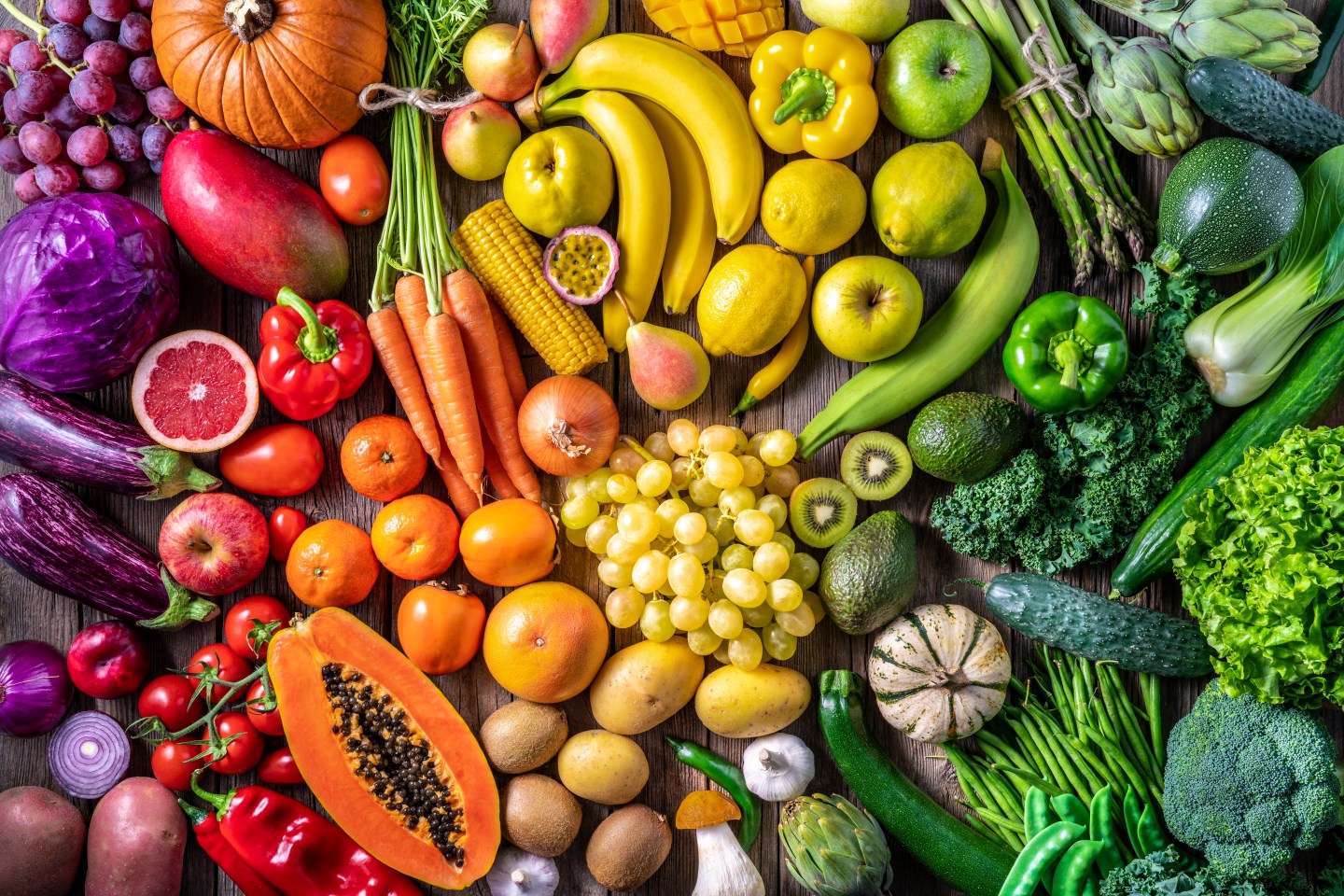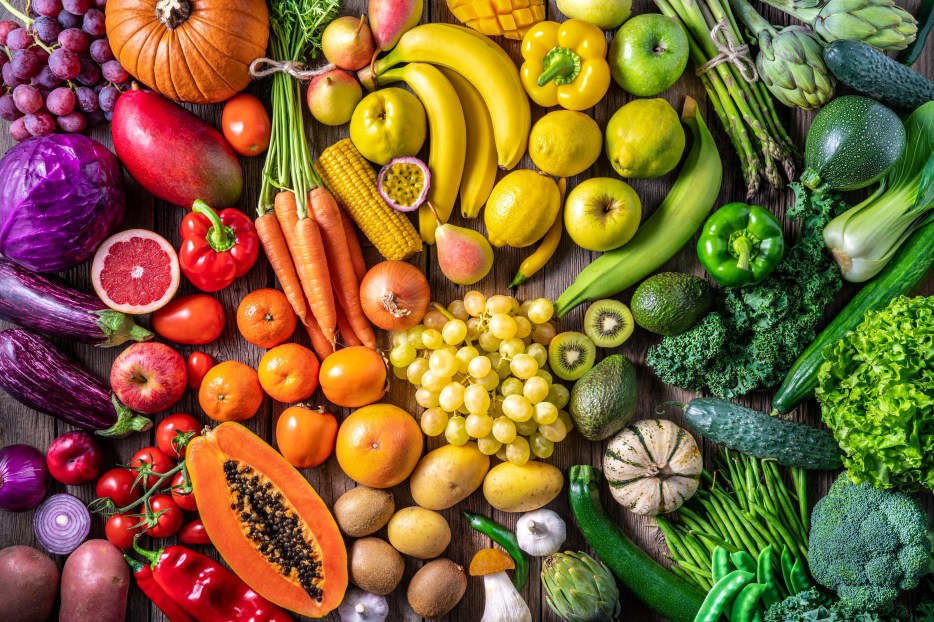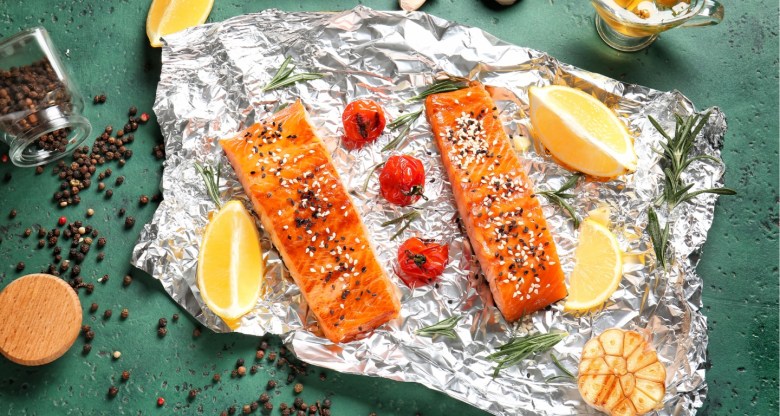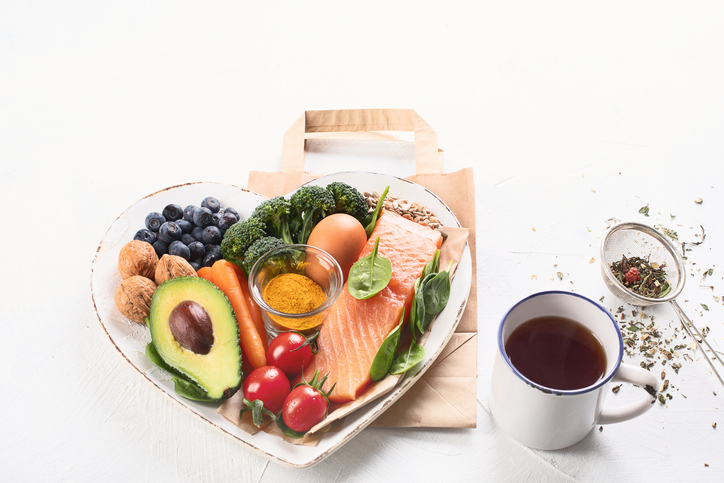Color Your Plate Heart-Healthy



Heart health is not just about limiting saturated and trans fats or sodium. It is just as much about what healthy things you can add to your diet. Adding fruits and veggies to your diet is a great way to increase your intake of vitamins and minerals. However, getting a variety of fruits and vegetables is just as important as eating them in the first place. There are 5 different color groups of produce that all offer their own benefits. It is important to consume a variety of colors every day in order to receive all of the necessary vitamins and nutrients, prevent heart disease, and other chronic diseases. Simply put, eating in color ties back to our overall health! Let’s dive into the color wheel.
Blue & Purple
One category of produce is the blue and purple group. The compound that causes some fruits and vegetables to be this color is called anthocyanin. Anthocyanins have many health benefits, including antioxidant, anti-inflammatory, anti-viral, and anti-cancer benefits. They also possess , anti-microbial, and anti-obesity effects, as well as prevention of cardiovascular diseases (CVDs) [1]. Examples of blue and purple produce include blackberries, blueberries, eggplants, plums, grapes, and raisins.
Red & Pink
Another type of produce is the red and pink group. Anthocyanins or carotenoids, a different plant chemical, can cause produce to be red or pink. Carotenoids also have antioxidant properties and can help protect against chronic conditions. Beta carotene, the inactive form of vitamin A, is considered a carotenoid along with lutein and lycopene. Carotenoids can improve your eye health, cardiovascular health and protect you from cancer [2]. Examples of red and pink produce include watermelons, tomatoes, sweet potatoes, eggs, cherries, red apples, red peppers, and red potatoes.
Orange & Yellow
A third kind of produce is the orange and yellow group. Carotenoids can also give an orange and yellow color to produce. Orange foods are gull of vitamin C, an antioxidant, which can support your immune system and help rebuild collagen in the skin. They also contain beta carotene, which supports skin health and is also an antioxidant. Examples of orange and yellow produce include carrots, cantaloupe, lemons, mangoes, yams, yellow peppers, orange peppers, sweet potatoes, and tangerines.
Green
Another category of produce is the green group. The chemical that makes plants green is called chlorophyll. Chlorophyll has antioxidant and anti-cancer properties [3]. Some of the leafy greens, such as spinach or kale with also provide vitamins K and A. One cup of cooked broccoli can also provide vitamins K and C plus folate and fiber. Other examples of green produce include limes, kiwis, green apples, green grapes, zucchini, cucumbers, peas, celery and brussels sprouts.
White
Finally, the last category of produce is the white group. The compound that makes some produce white is called anthoxanthin. Anthoxanthins are in the same family as anthocyanins, so they have the same benefits for the human body. White foods such as garlic and onions contain the compound quercetin which may help protect against certain cancers. Other examples of white produce include potatoes, cauliflower, artichokes, onions, and garlic. Don’t forget turnips count too! Try thinly slicing the turnips and baking them like a potato chip for a delicious way to add some white produce to your plate.

















